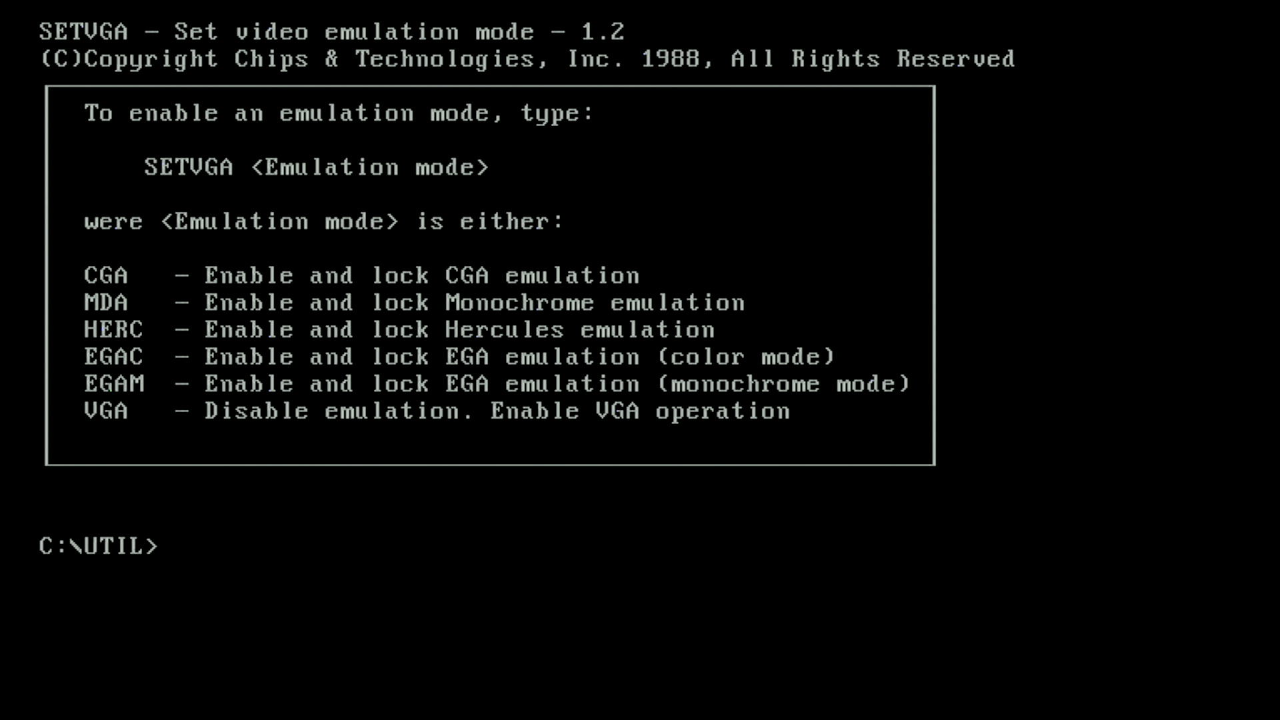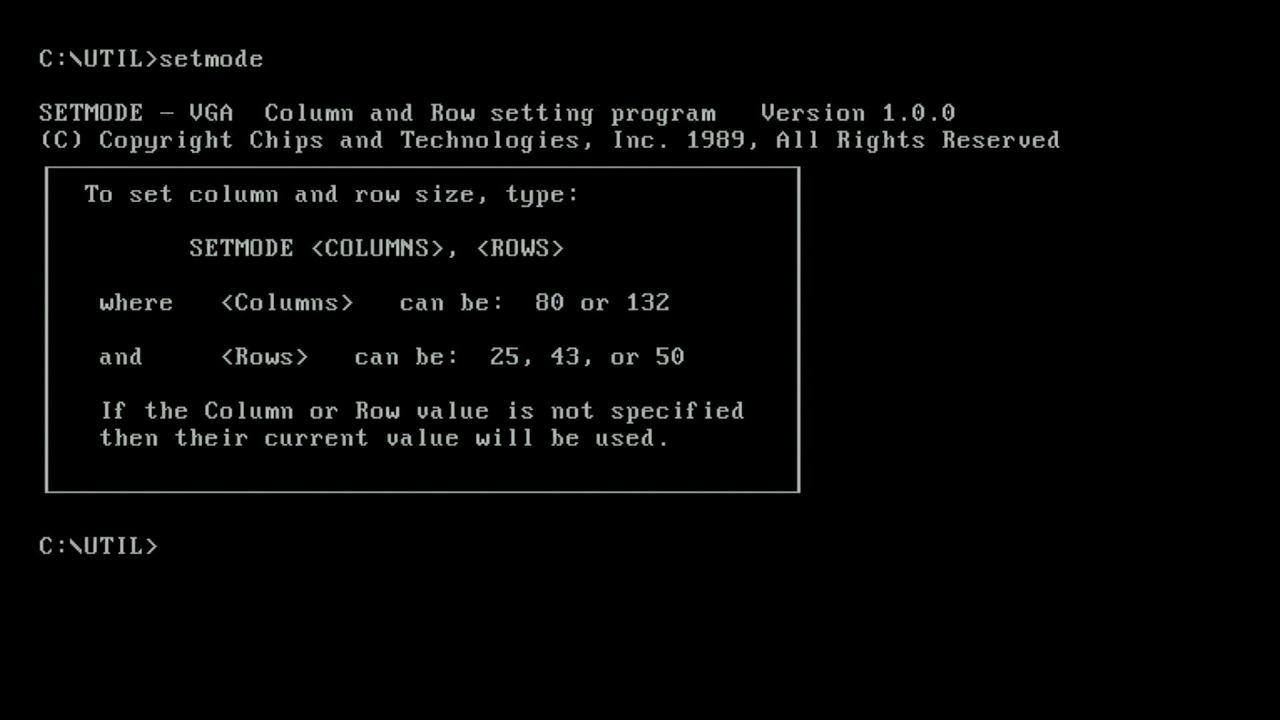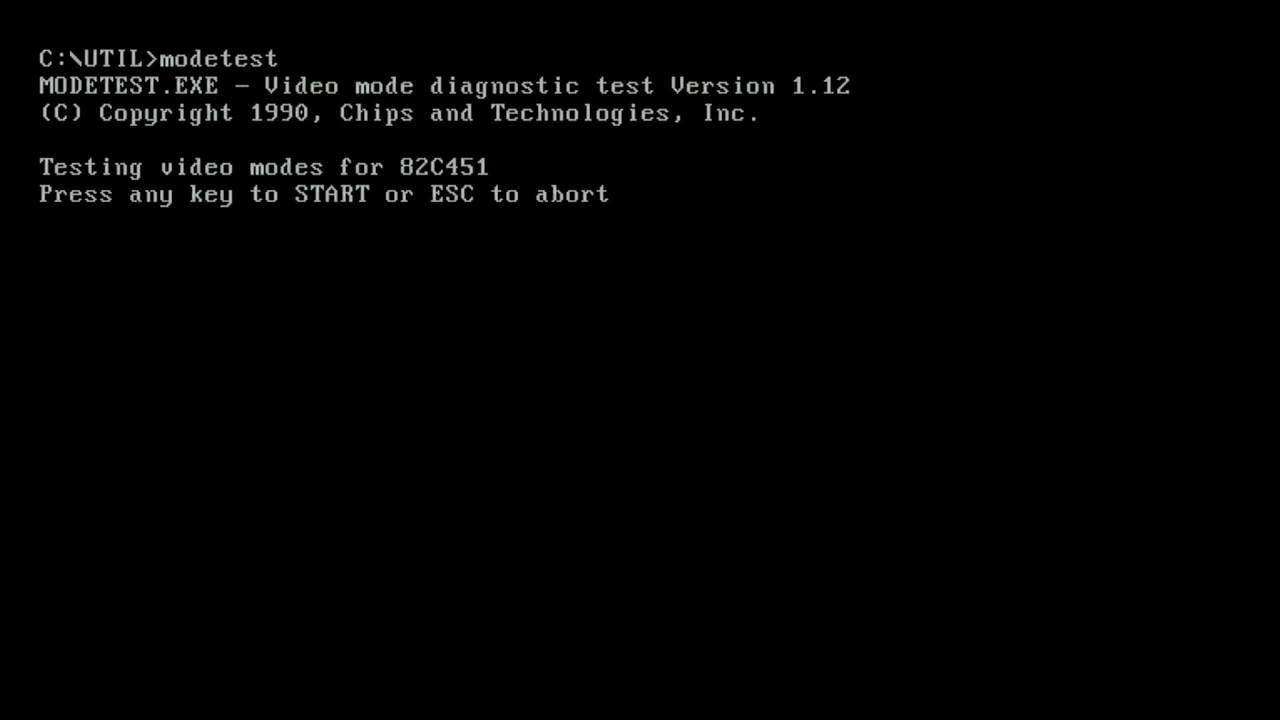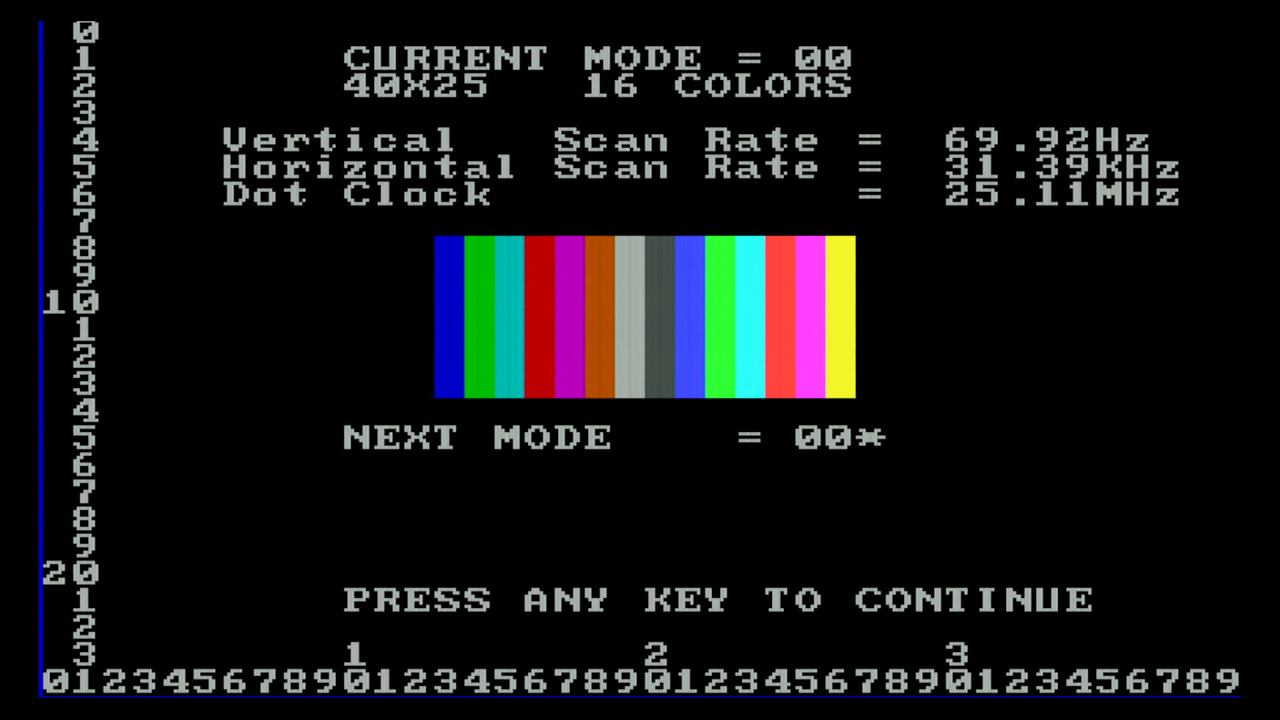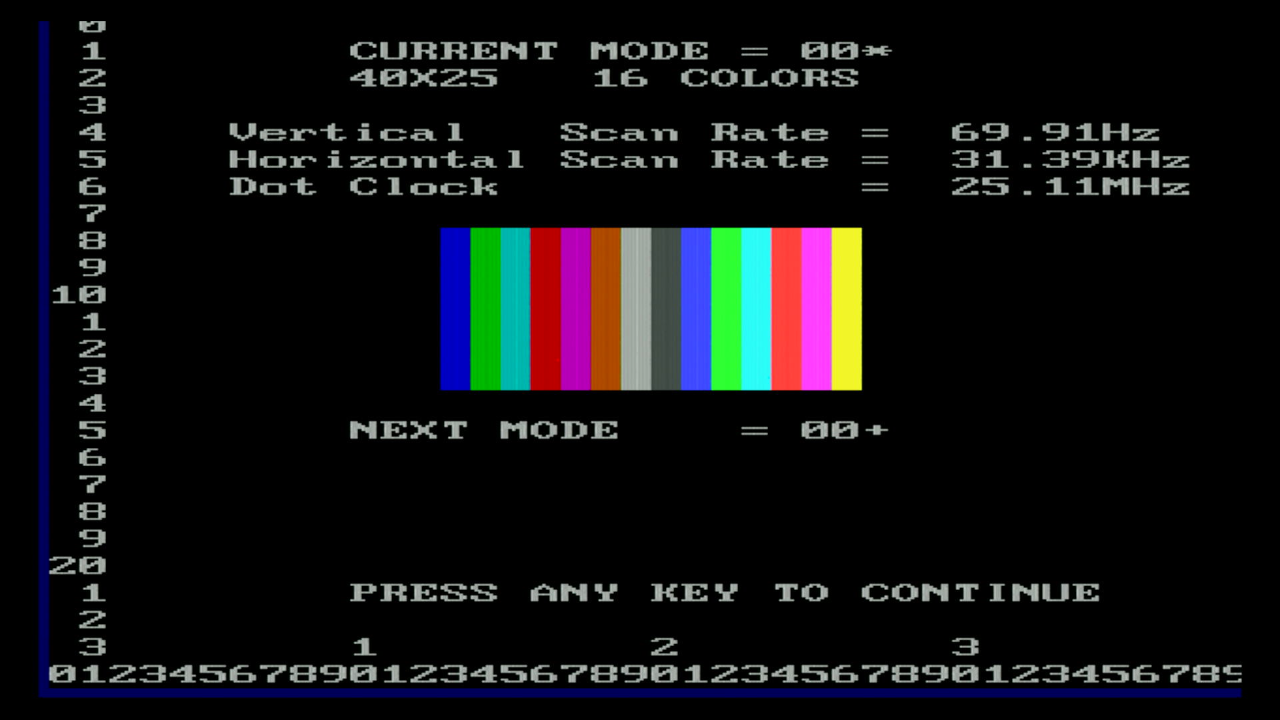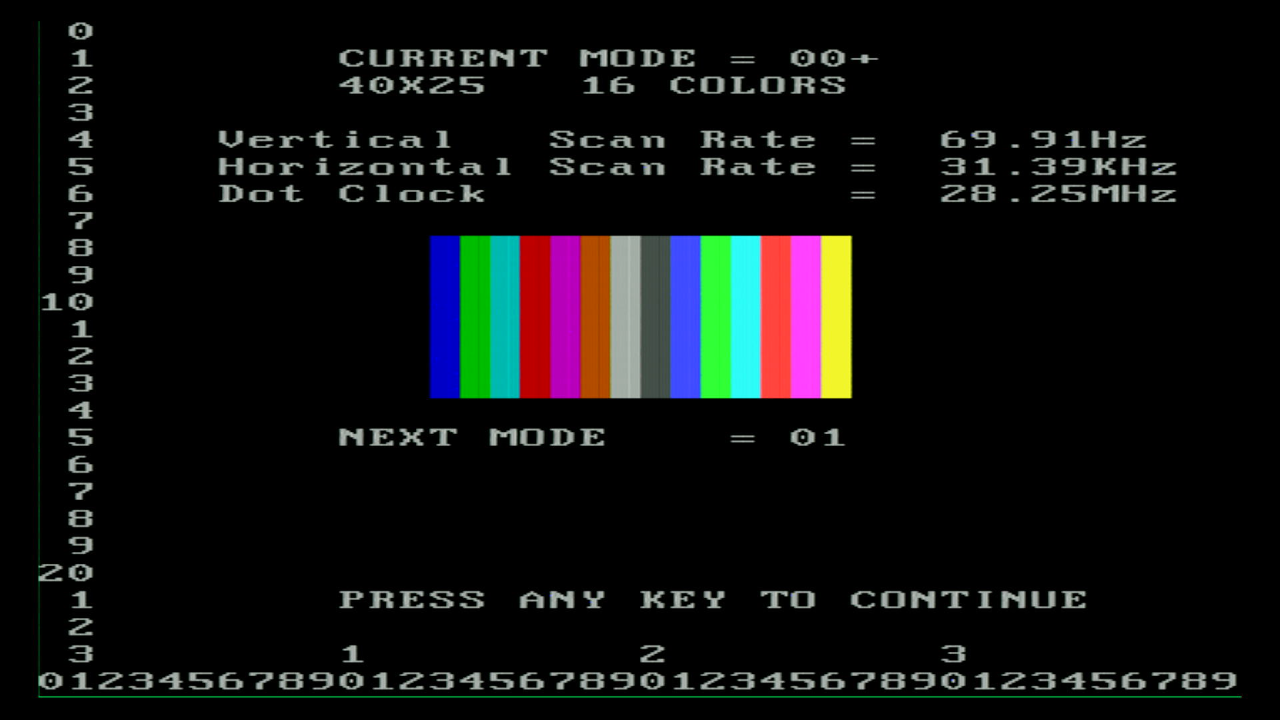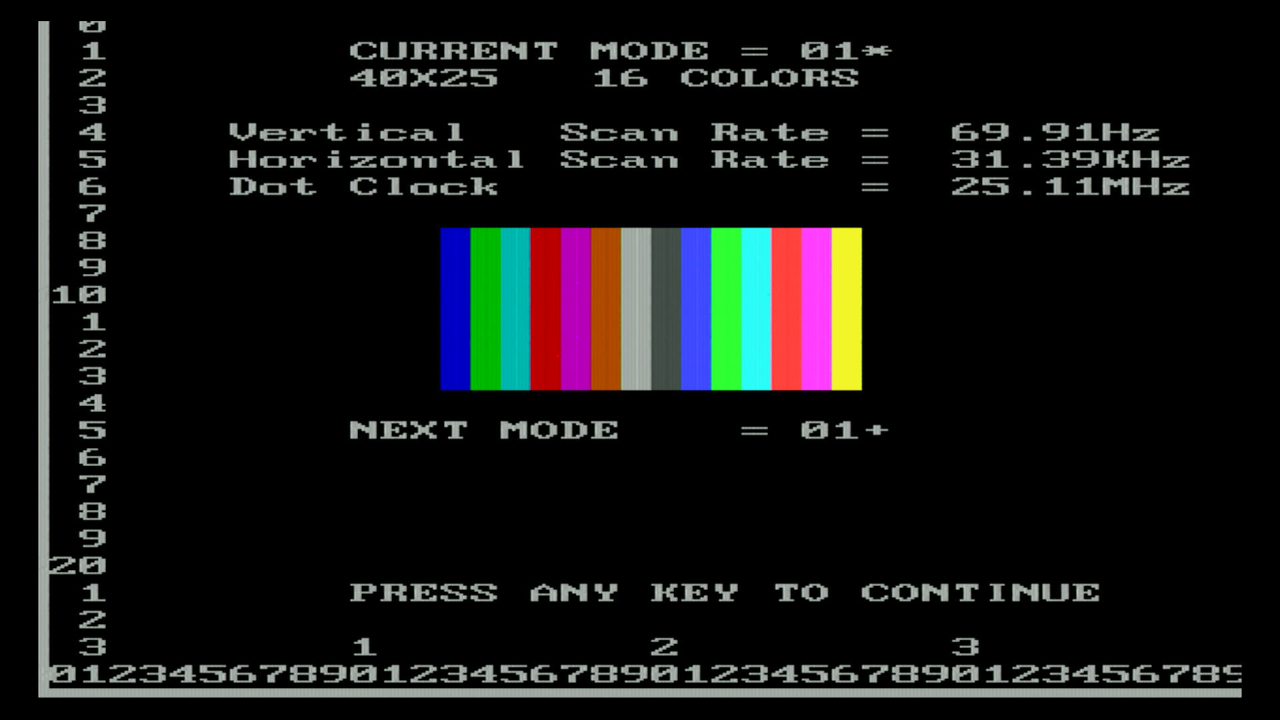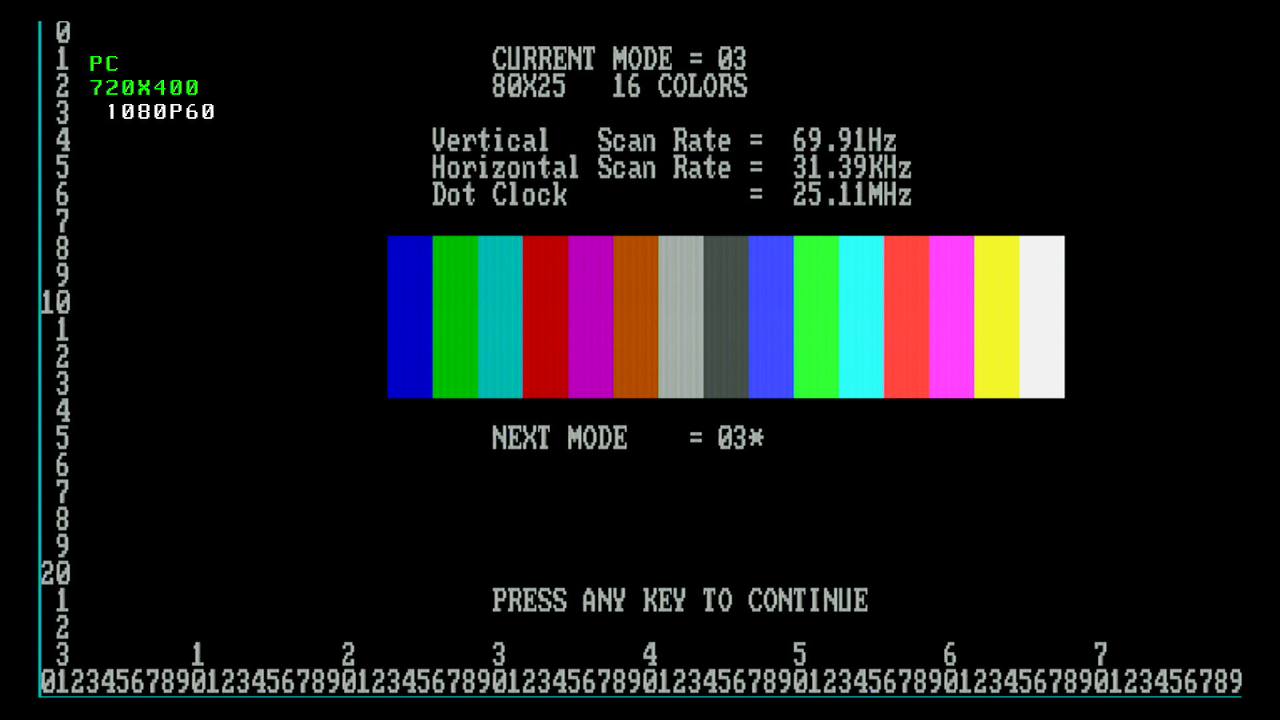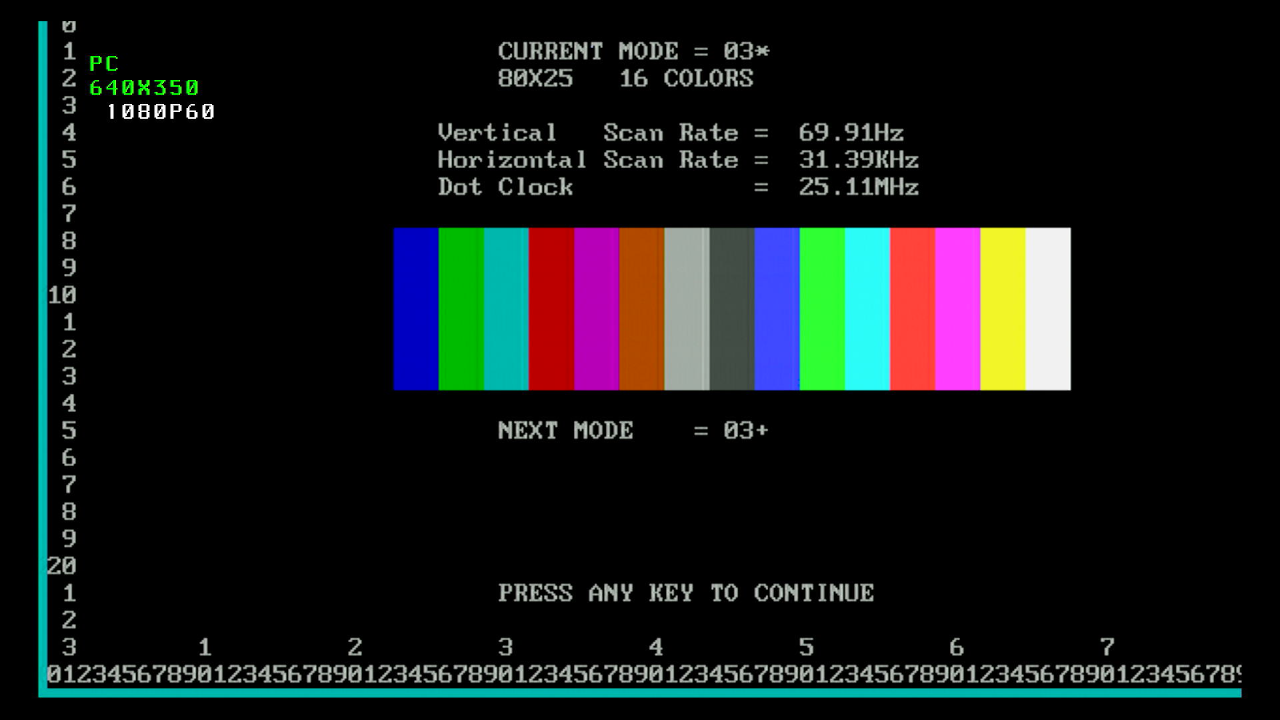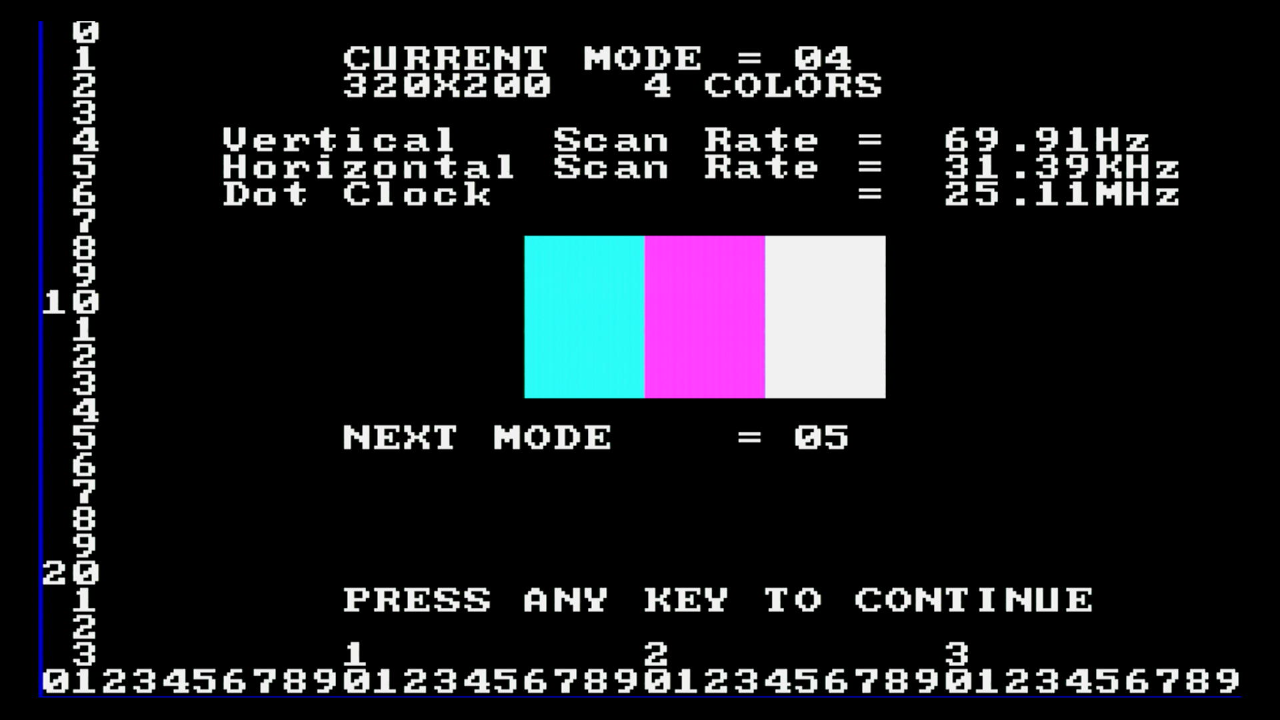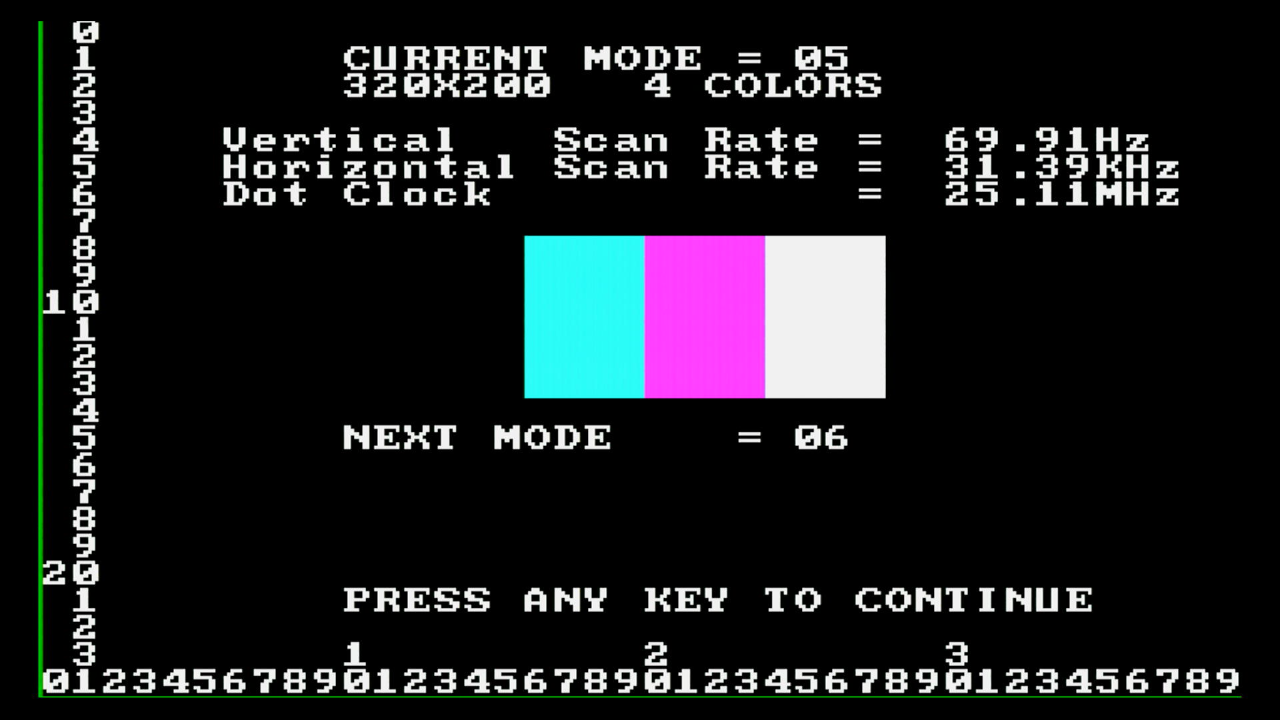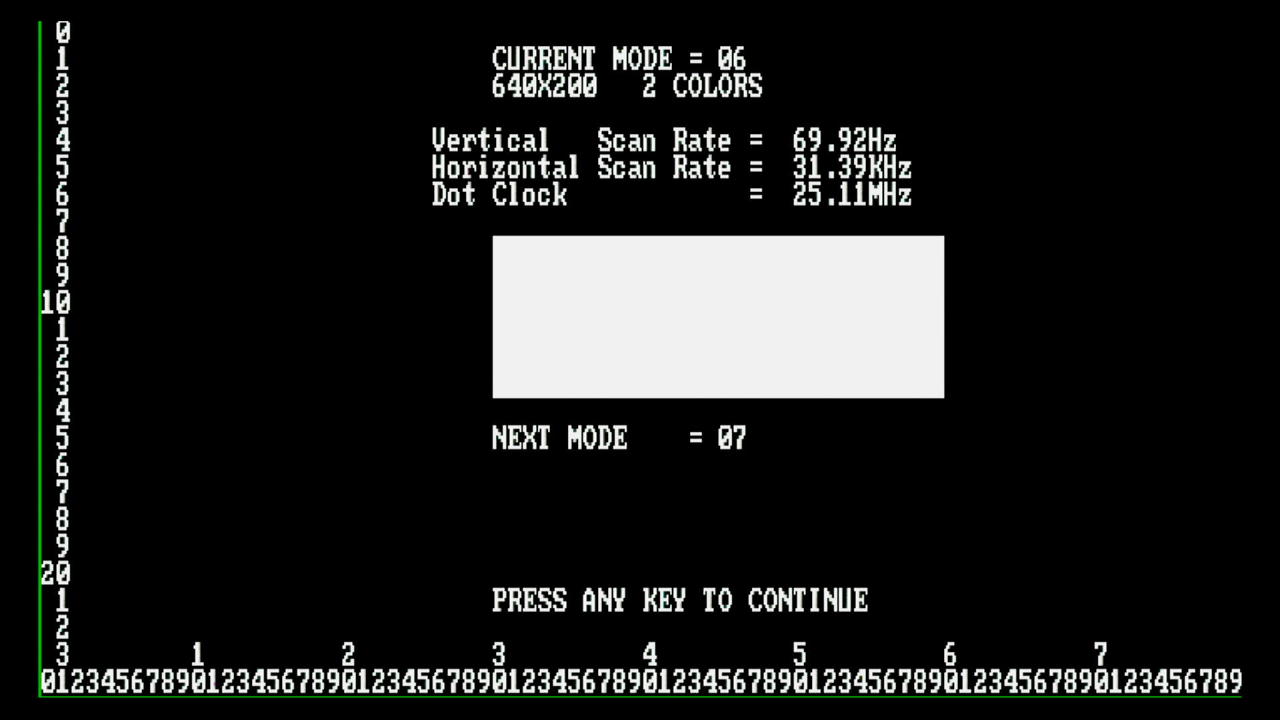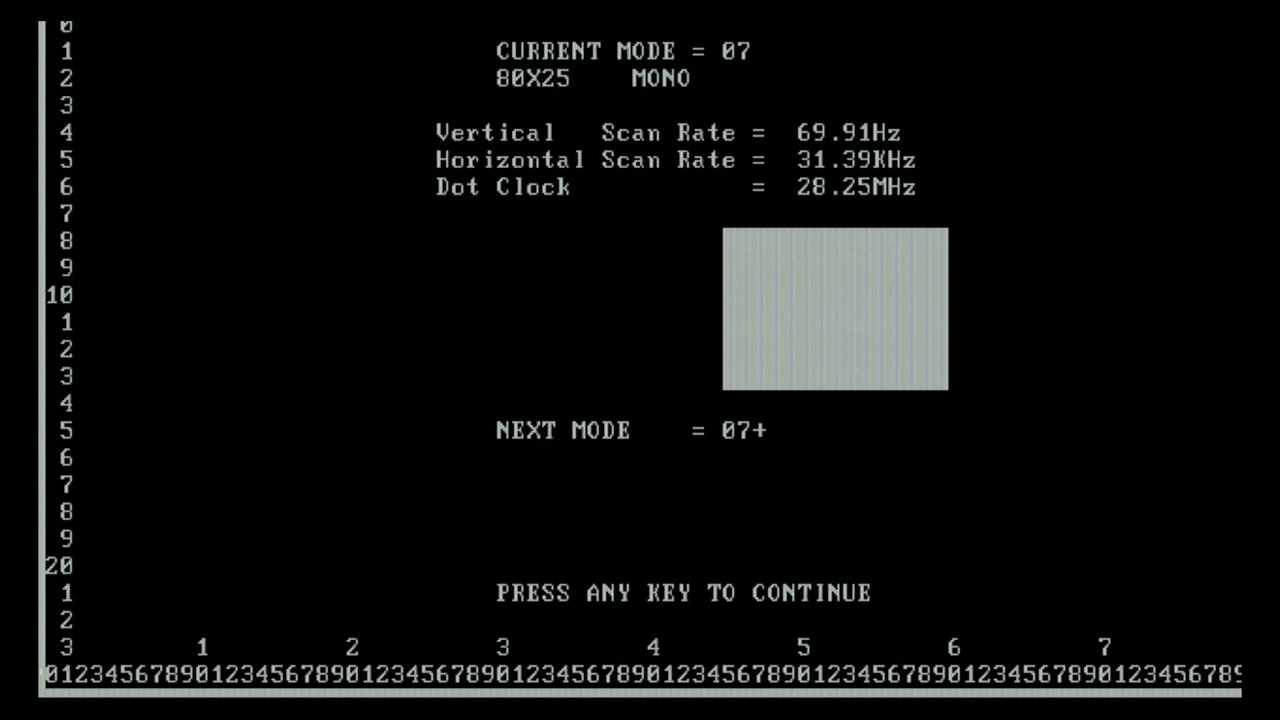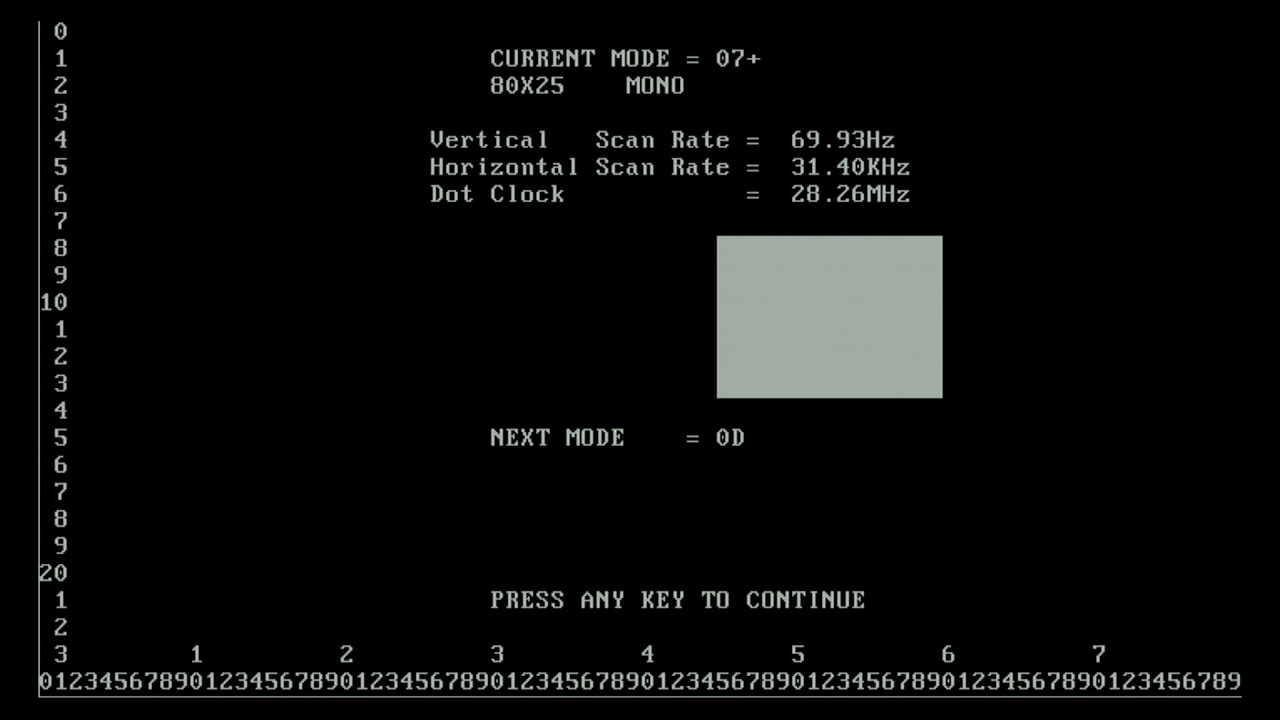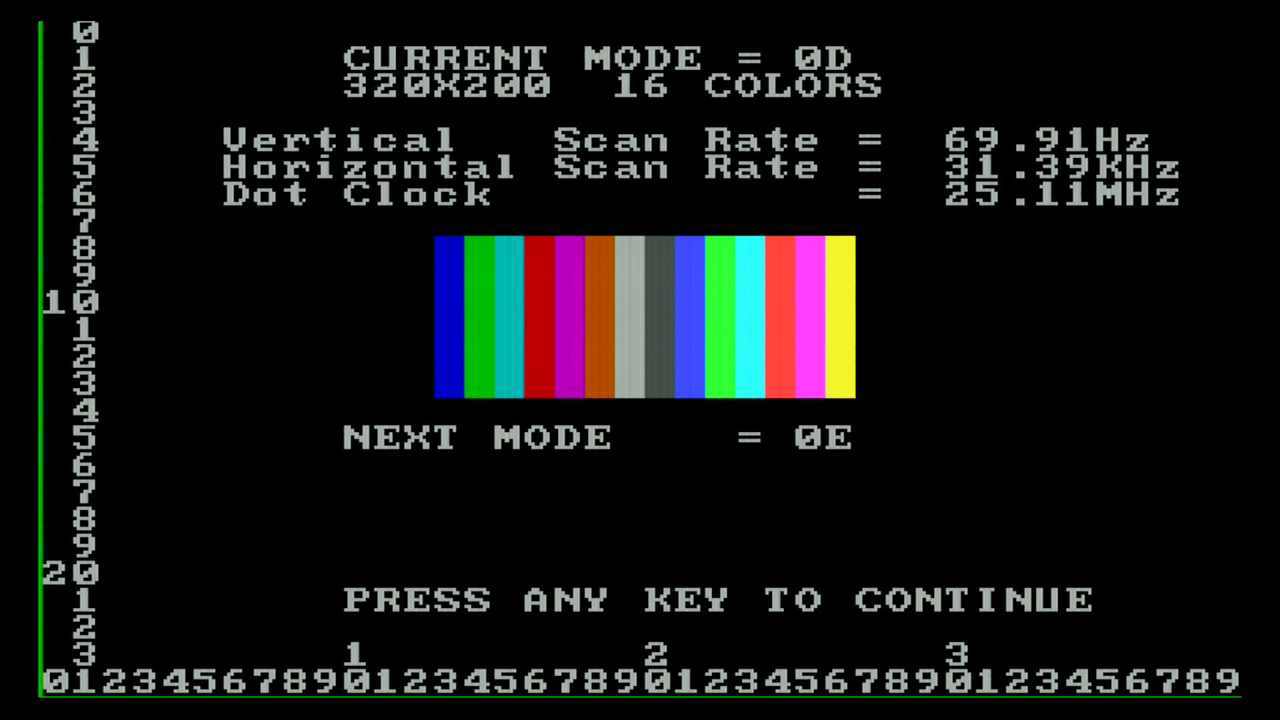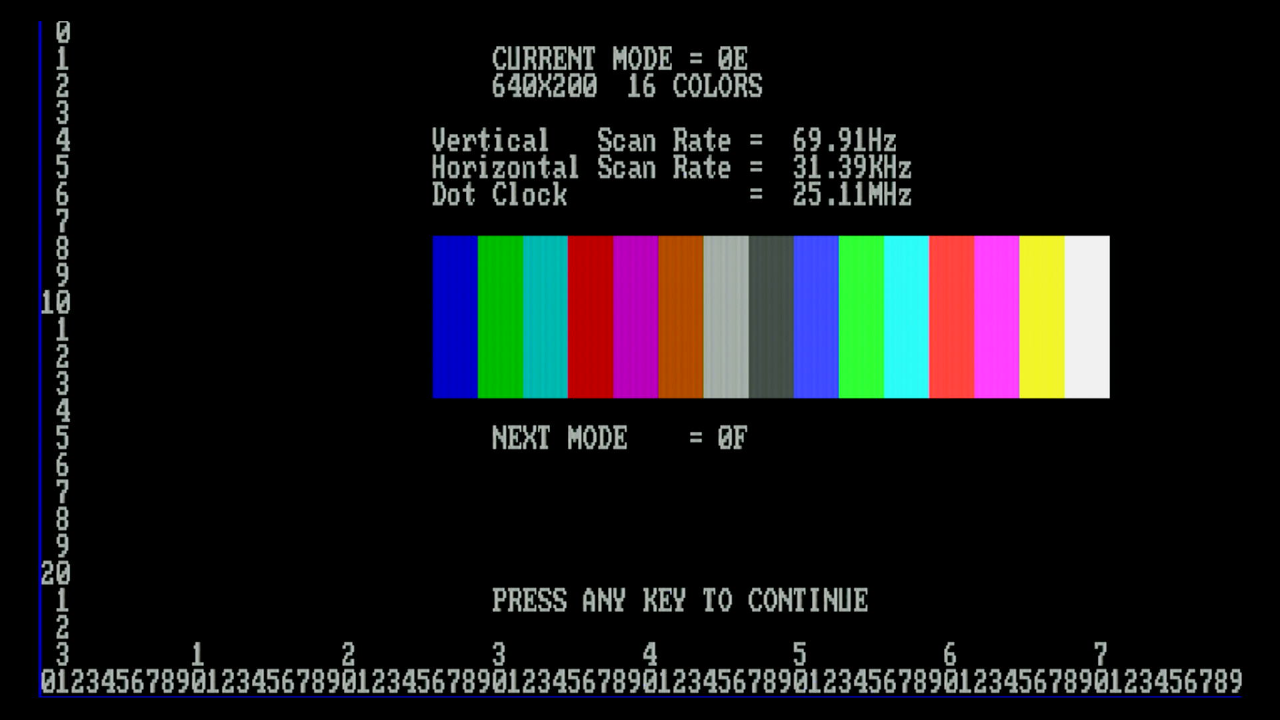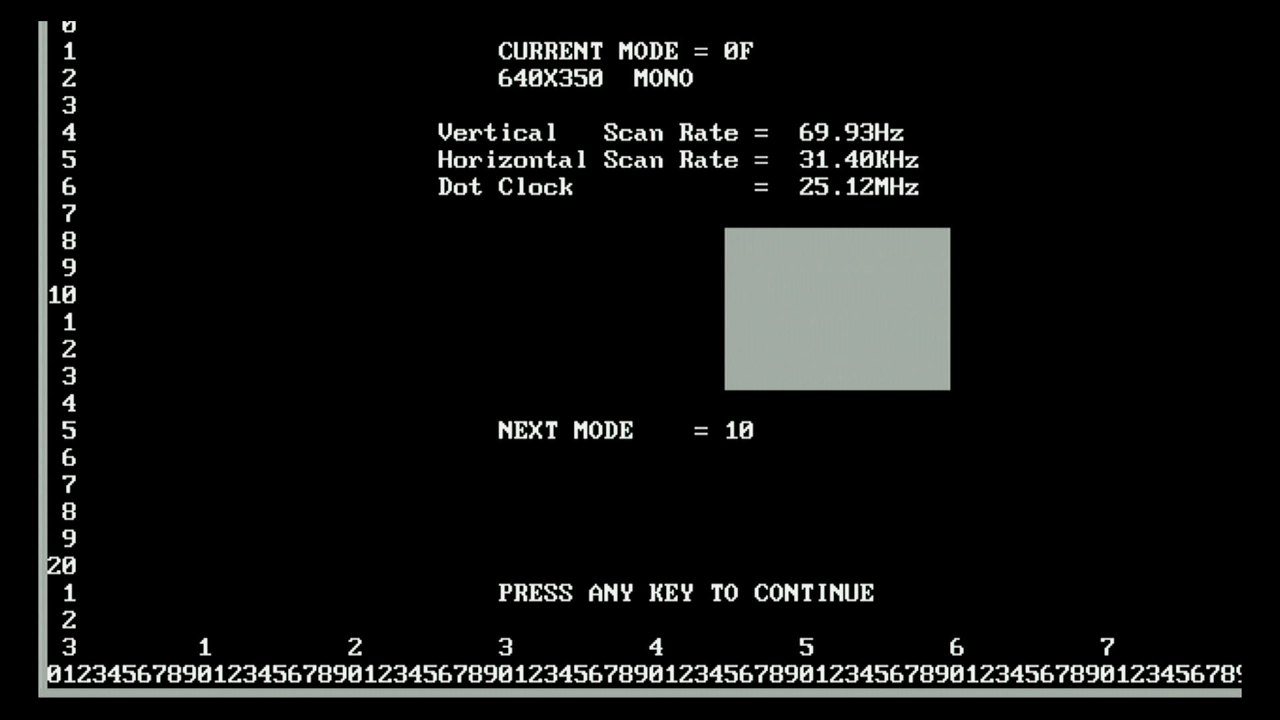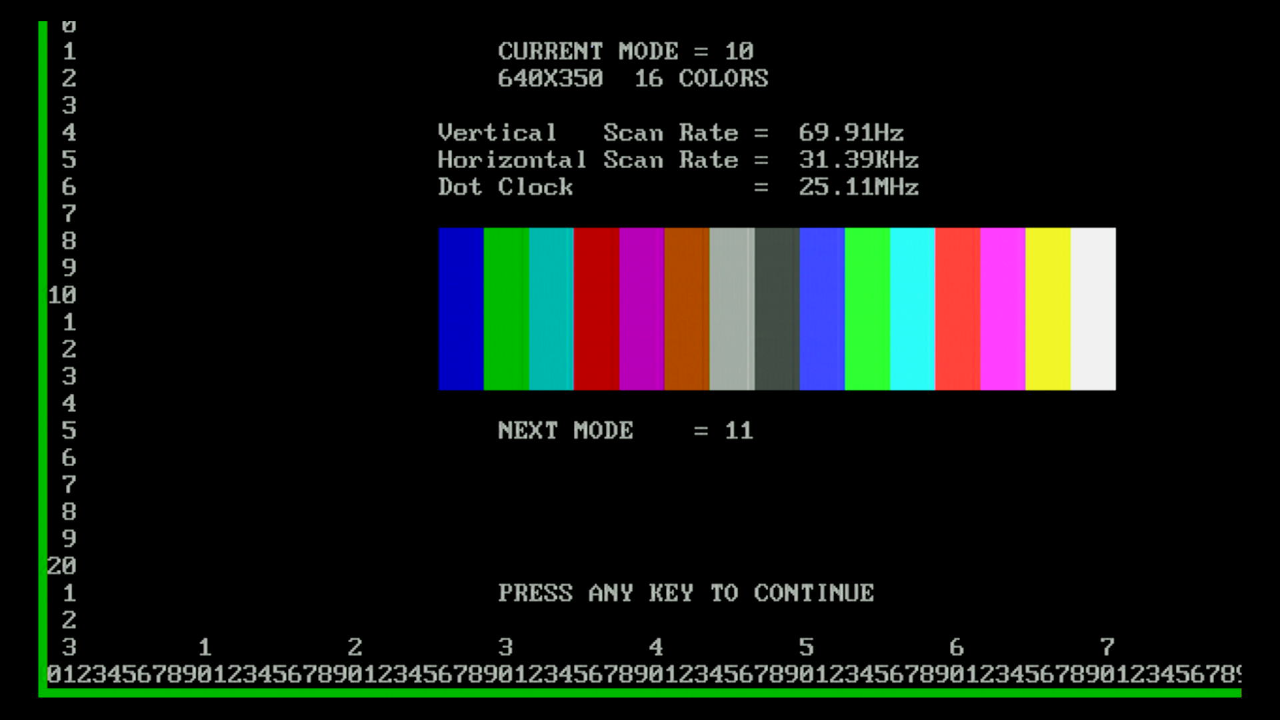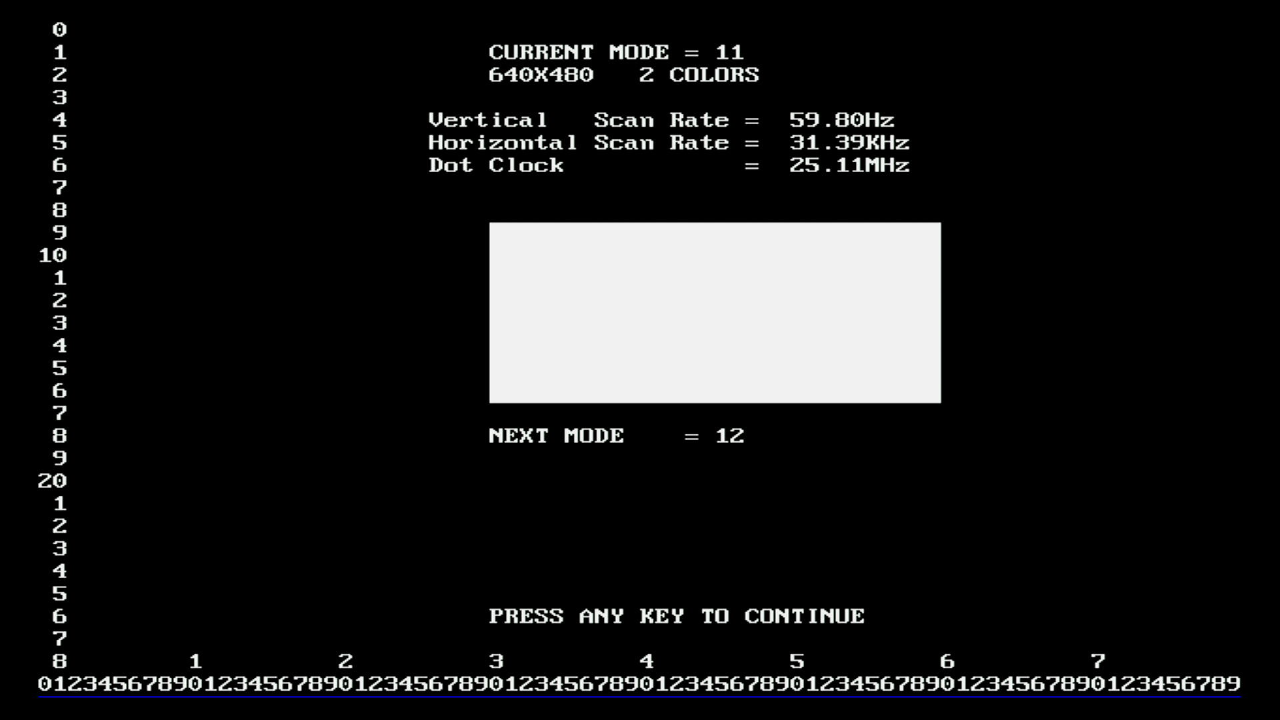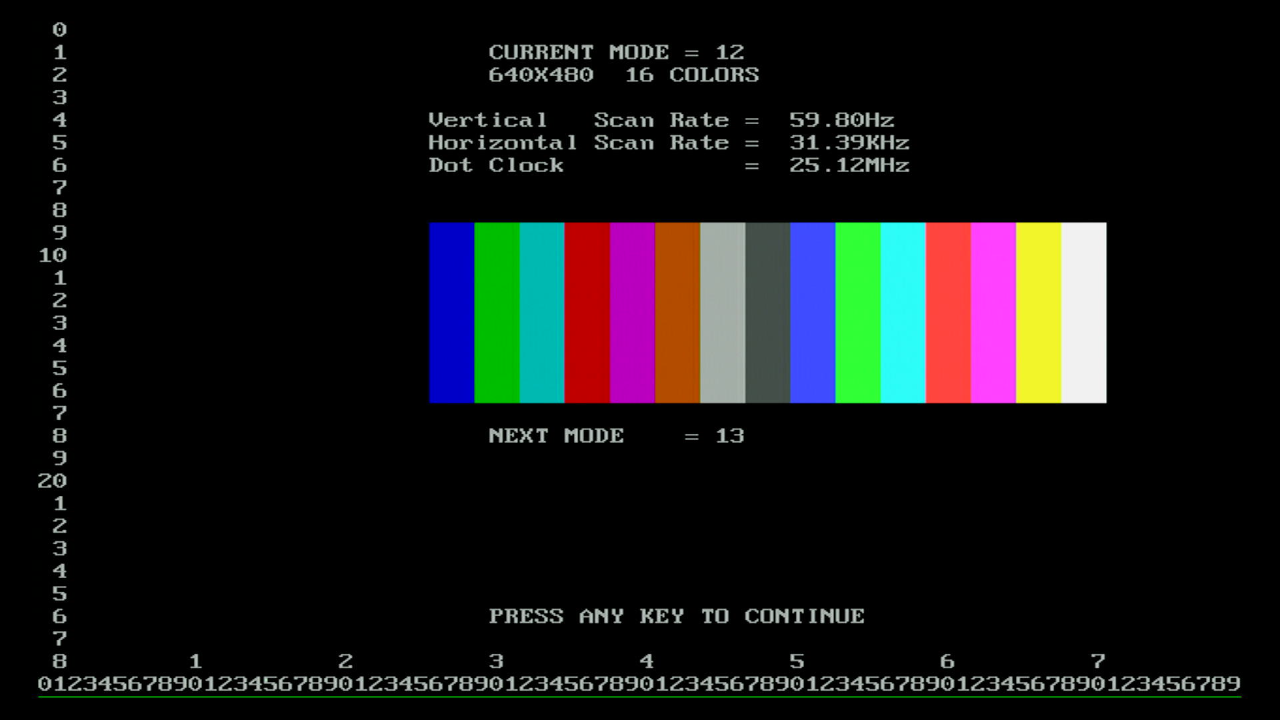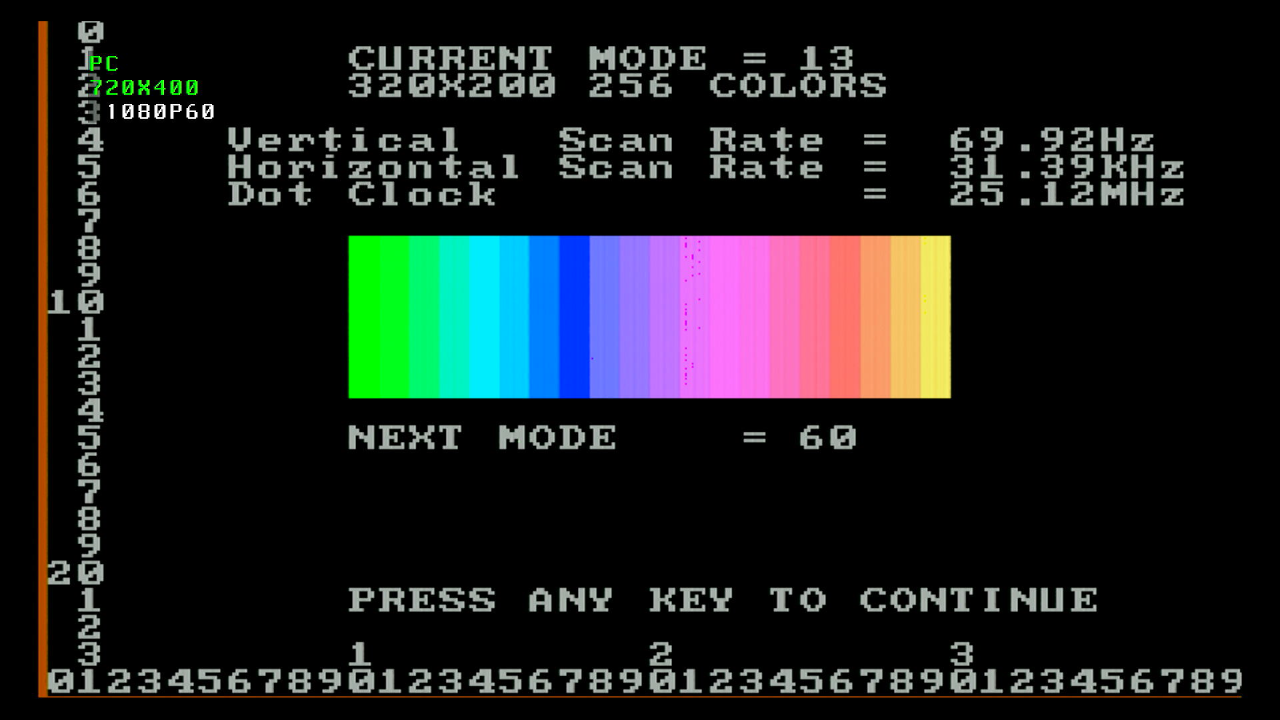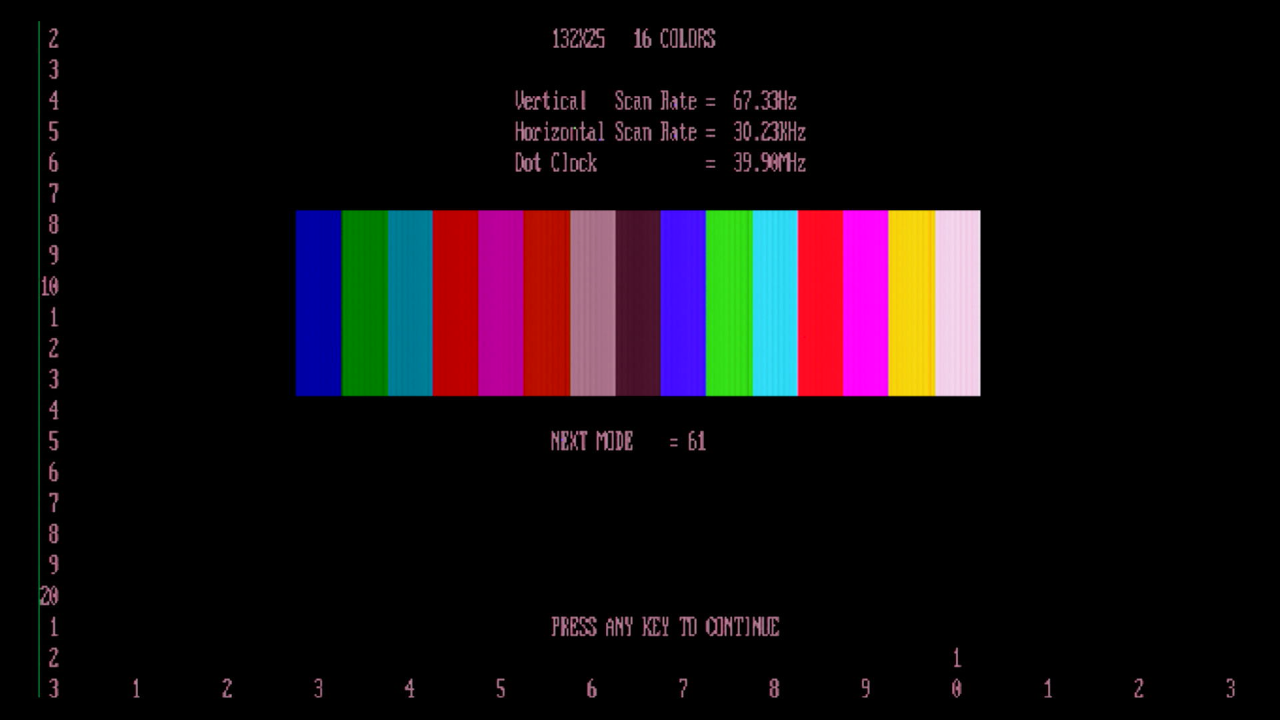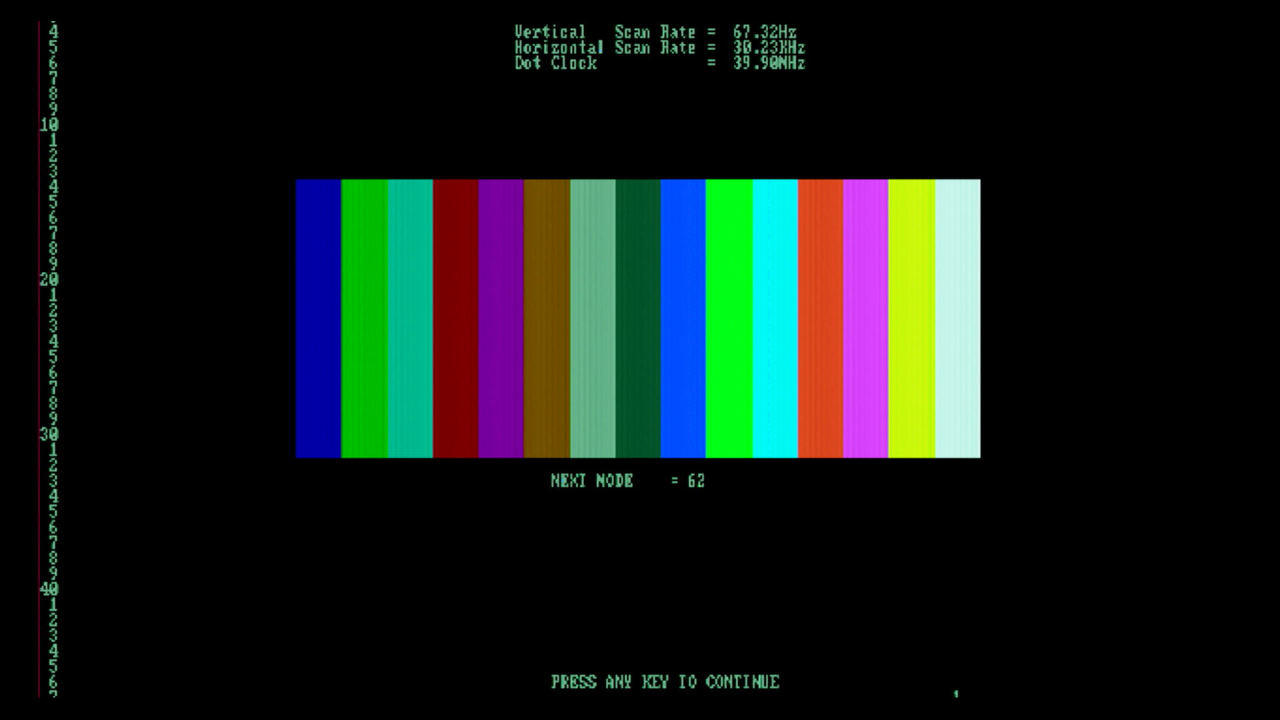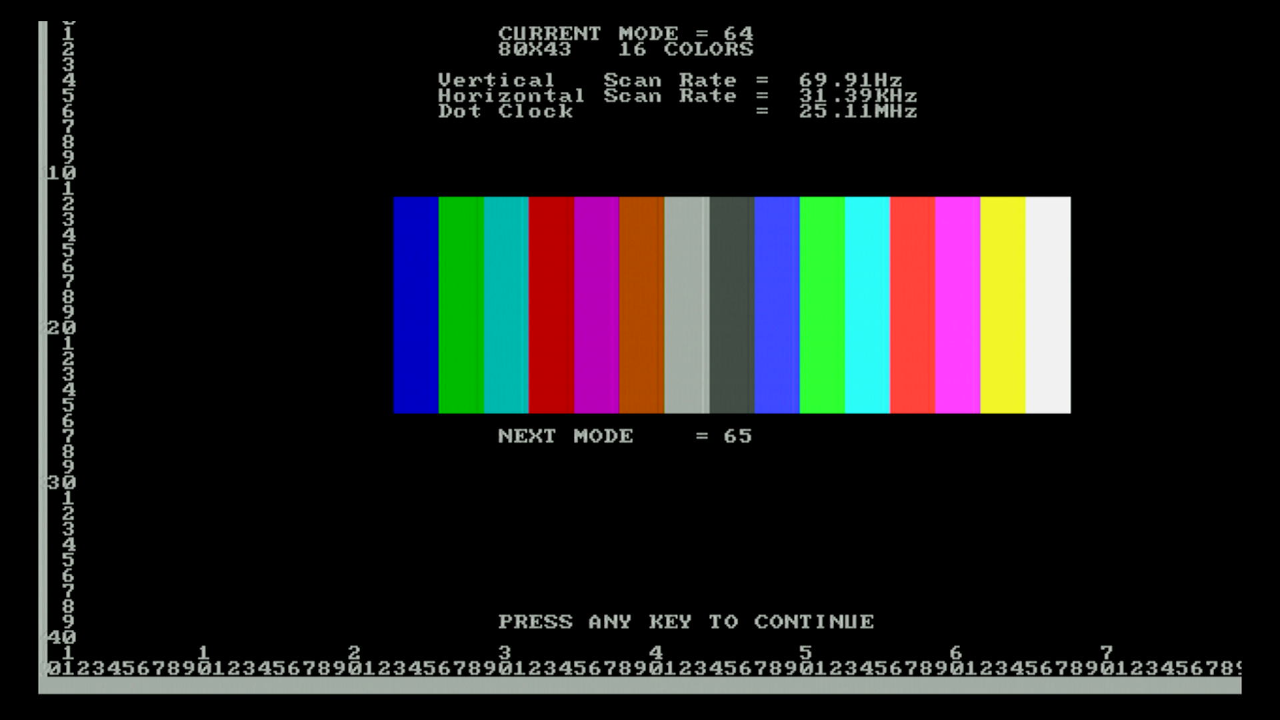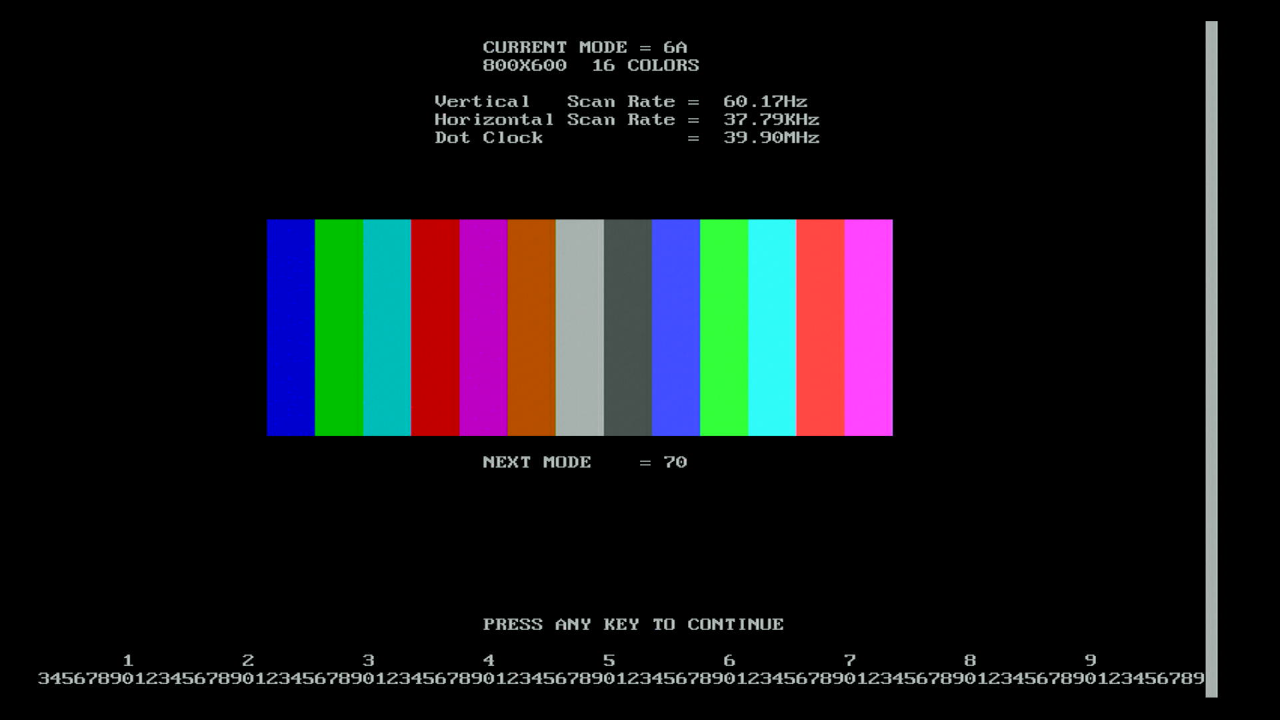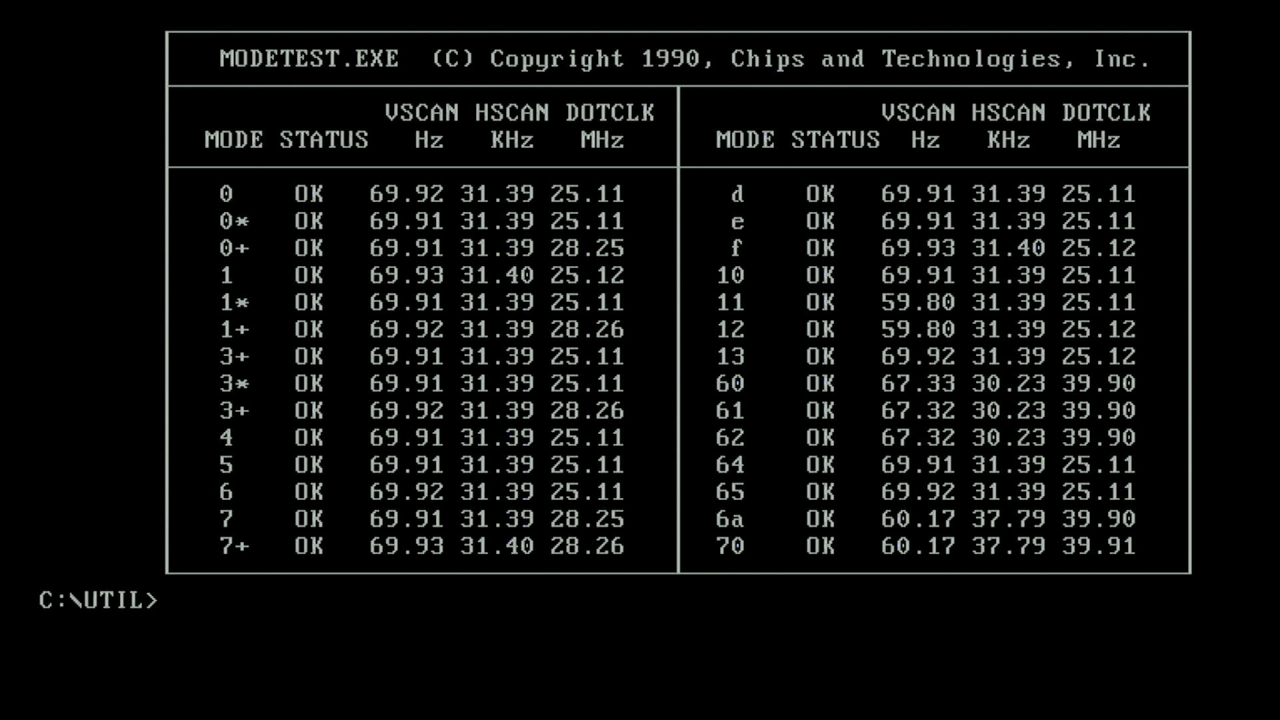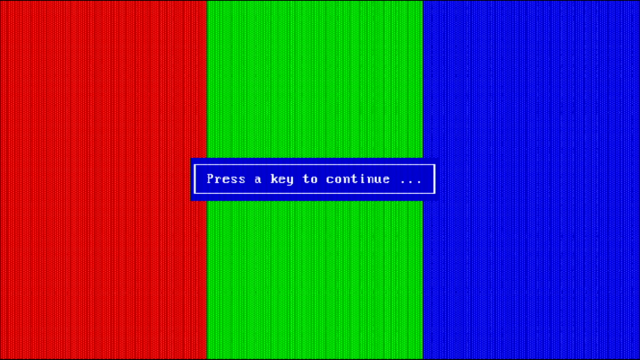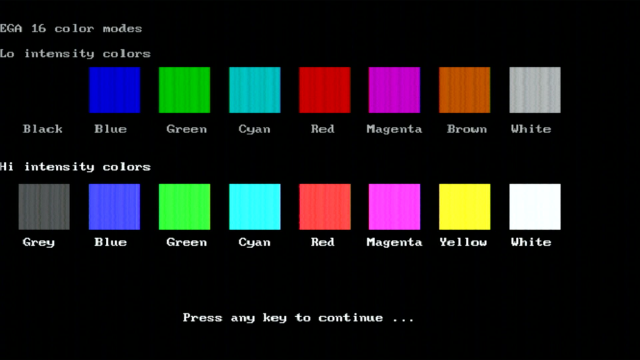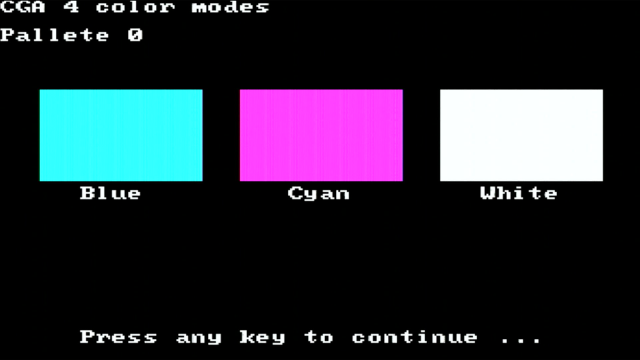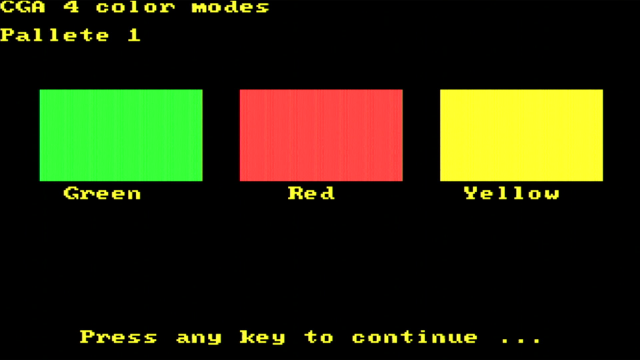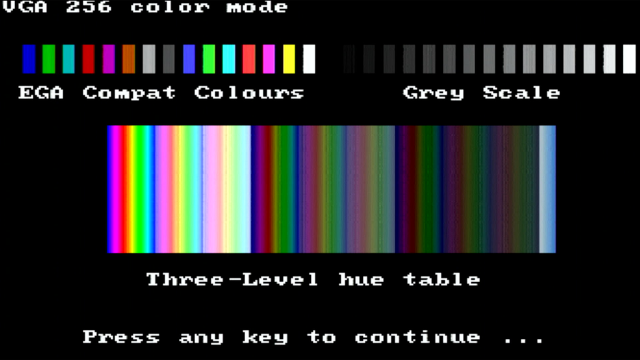Retro Review: Octek EVGA-16 Part 2
18th November 2023
In Part 1 I explored this VGA card from 1991, looking at its components parts and researching a bit of its history. Here's that pic again:
Octek EVGA-16 Super VGA Card (1991)
Bought in October 2023 for £30
In this Part 2, we'll take a look at the Octek EVGA Drivers & Utilities disk, install them and test the card thoroughly.
Incidentally, on boot-up the VGA ROM BIOS briefly displays this message:

The Software
The Octek EVGA-16 (and its smaller brother, the EVGA-8) comes with a drivers & utilities disk. Jumping right into the utilities, let's do an install. This is done by running SETUP.EXE from the floppy disk:
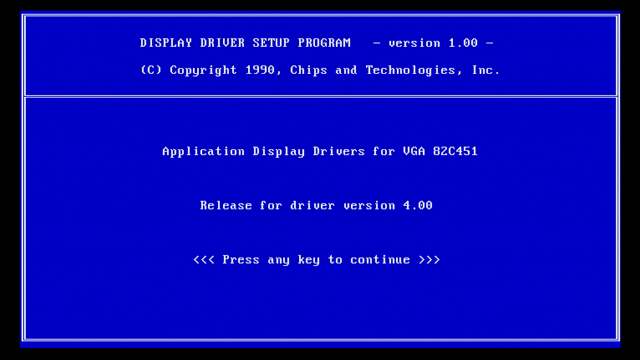
The main setup intro screen
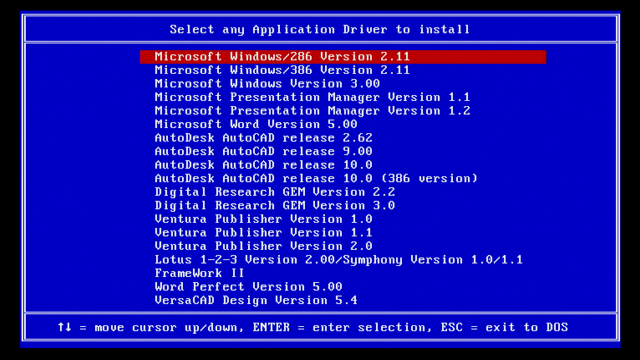
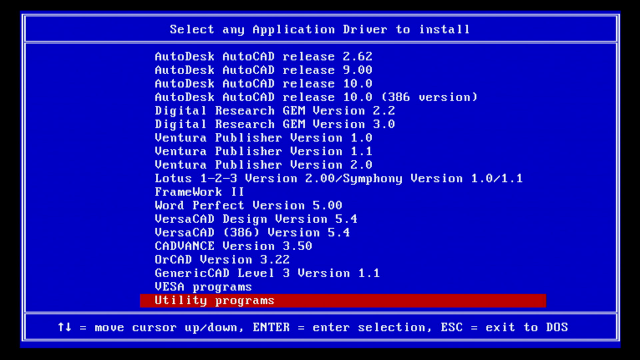
Lots of software drivers are available for this card
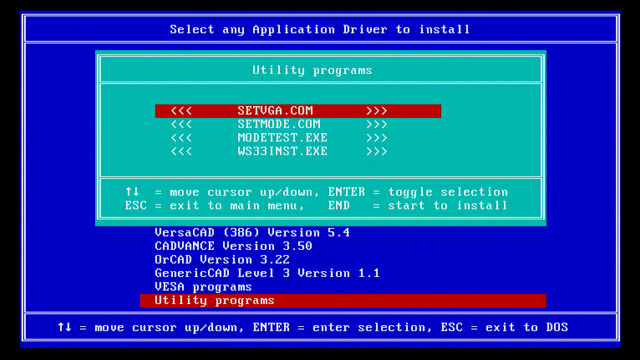
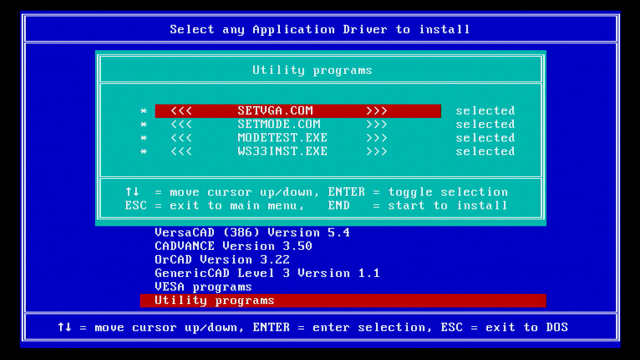
I chose to install the "Utility programs"
first, as I want to test the various video and text modes supported, plus the emulation of MDA, Hercules, CGA and EGA.
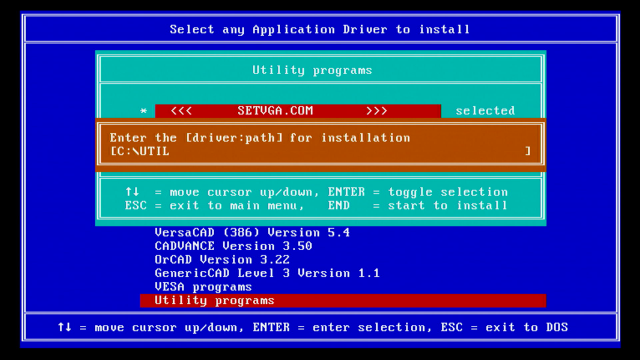
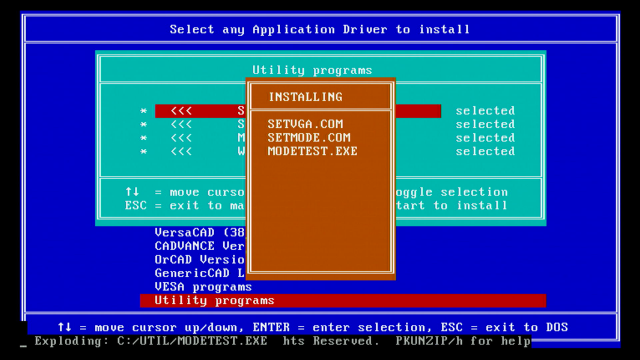
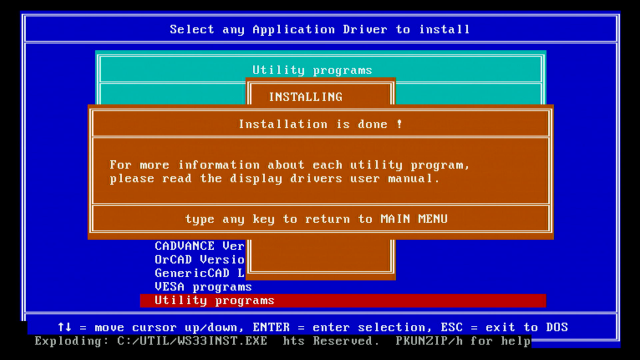
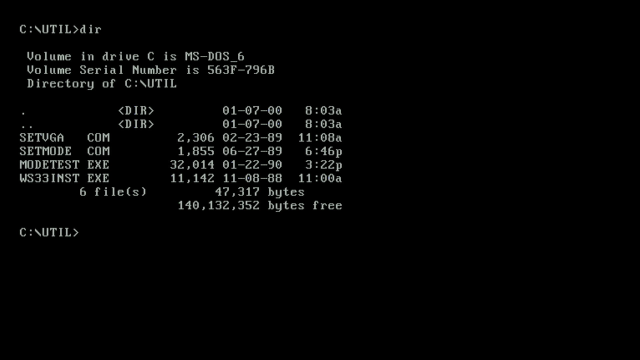
It defaults to installing the utilities into C:\UTIL
The utilities are few, but functional:
| Filename | Purpose |
|---|---|
| SETVGA.COM | Enables or disables 'Emulation' mode for other graphics standards. |
| SETMODE.COM | Similar to the DOS MODE command, sets the text mode to 40x25, 80x25, 132x43, 132x50, etc. |
| MODETEST.EXE | A full-featured program that takes you through the various text and graphics modes the card supports. |
| WS33INST.EXE | A patch program for WordStar 3.3 - requires the main executable to be in the same directory. |
Here's SETVGA running:
And SETMODE running:
MODETEST is very thorough, allowing you to test the various display modes including colours, shape, etc:
All mode values from 0h to 13h are the standardised ones used by IBM. Modes from 60h and higher are special ones handled by the card to cater for higher-resolution text modes up to 132 columns wide and up to 50 rows high.
So this confirms the 40 MHz crystal is used only for all of the 800 x 600 resolution modes.The 28.322 MHz crystal is used for:
- Mode 0+ (16-color VGA 9x16 character block, 8 display pages)
- Mode 1+ (16-color VGA 9x16 character block, 8 display pages)
- Mode 3+ (16-color VGA 9x16 character block, 4 display pages)
- Mode 7 (MDA/Hercules/Mono EGA 9x14 character block)
- Mode 7+ (Mono VGA 9x16 character block)
Testing
Unfortunately this card is exhibiting some quality issues - namely jailbars. Running MonTest v1.93.0B provided these images:
VGA Testing
Here's some more games I recorded that show the VGA output. I had temporarily switched back to using the Extron RGB-HDMI 300 A scaler for all apart from the SQ4 intro below, which is why you may see some jittering in the other videos. The retro PC hardware is my PC Chips M590 motherboard running an Intel Pentium MMX 200, the Octek EVGA 16 of course, a Sound Blaster Pro 2 (CT1600), and a combination of a real IDE hard disk for booting and a CompactFlash for drive D:
Formula One Grand Prix struggled with the 'screen fade' effect on the menus where it seems to flicker. I don't know why this occurs; in-game it seems to run without any glitches. I did a quick race on Monza to test it out - things didn't go to plan when my attempt to cheat and cut the corner resulted in a pile-up - oh well...
4D Sports Driving (Stunts) also ran well, though the jailbars are very noticeable, especially with the grey. I did a very poor lap on the default track in the Ferrari using keys, followed by viewing the replay.
Space Quest IV: Roger Wilco and the Time Rippers ran pretty nicely, though again the jailbars are noticeable. The system was heavily slowed down using SetMul v1.21, otherwise the sound initialization occurs too fast and won't work.
Legend of Kyrandia ran well - these slow ISA cards are great for graphic adventure games like this, where there isn't a great amount of pixel pushing required.
Card Performance
You're probably already aware that the performance (data throughput) of an ISA VGA card isn't as important as the quality of its output. Most games and application software during the ISA-only bus era were impacted far more by the CPU and its clock speed than whether you had a low-end VGA card or the best money could buy. This all changed with the arrival of VESA Local Bus on the 486 platform. Since I have this card in the machine, let's run some performance tests anyway...
For these old ISA cards I tend to run the following benchmarks:
- VidSpeed v3.2
- VMAX256
- VSpeed v0.42
- VGAFPS
- Superscape and Superscape 2
- Chris' 3D Bench
- PC Player Benchmark
For comparison, the table below shows the scores from my Tseng Labs ET4000AX-based card with 1 MB of 80ns RAM (compared to the 100ns RAM on this Octek), running on the exact same Pentium MMX 200 machine. The ISA clock was set to PCICLK/4 for the synthetic tests and changed from /4 to /3 for the real-world 3D tests:
| Octek EVGA-16 | ViewTop Tseng Labs ET4000AX | |
| VidSpeed v3.2 | Normal RAM: Write = 30059, Read = 73890 kb/s CGA 320x200x4: Write = 1252, Read = 1012 kb/s EGA 320x200x16: Write = 891, Read = 785 kb/s VGA/MCGA 320x200x256: Write = 986, Read = 908 kb/s VGA/MCGA 640x480x16: Write = 553, Read = 527 kb/s |
Normal RAM: Write = 44609, Read = 102275 kb/s CGA 320x200x4: Write = 1746, Read = 1475 kb/s EGA 320x200x16: Write = 1745, Read = 1556 kb/s VGA/MCGA 320x200x256: Write = 1745, Read = 1634 kb/s |
| VMAX256 v1.11 (256-colour mode) | 8-bits: 1.111 Mb/s (RAM: 14.622) 16-bits: 0.556 Mw/s (RAM: 15.017) 32-bits: 0.278 Mdw/s (RAM: 15.017) |
8-bits: 1.111 Mb/s (RAM: 23.151) 16-bits: 0.833 Mw/s (RAM: 22.225) 32-bits: 0.466 Mdw/s (RAM: 22.225) |
| VSpeed v.042 | Blk Size: 4096, VFreq: 59.9-70.09 Hz, HFreq: 31.4 kHz 320x200x4: 16WR=1253/1013, 32WR=1560/1332 320x200x4: 16WR=1253/1012, 32WR=1562/1329 640x200x2: 16WR=565/536, 32WR=605/575 320x200x16: 16WR=891/785, 32WR=1019/935 640x200x16: 16WR=565/536, 32WR=605/575 640x350x4: 16WR=614/573, 32WR=666/635 640x350x16: 16WR=614/573, 32WR=666/635 640x480x2: 16WR=555/527, 32WR=590/562 640x480x16: 16WR=555/527, 32WR=590/562 320x200x256: 16WR=987/909, 32WR=1075/1000 |
Blk Size: 4096, VFreq: 59.8-70.01 Hz, HFreq: 31.4 kHz 320x200x4: 16WR=1745/1474 , 32WR=1953/1701 320x200x4: 16WR=1745/1474 , 32WR=1953/1701 640x200x2: 16WR=1745/1535 , 32WR=1953/1803 320x200x16: 16WR=1745/1554 , 32WR=1953/1786 640x200x16: 16WR=1745/1535 , 32WR=1953/1804 640x350x4: 16WR=1746/1538 , 32WR=1953/1805 640x350x16: 16WR=1745/1539 , 32WR=1953/1805 640x480x2: 16WR=1745/1534 , 32WR=1953/1802 640x480x16: 16WR=1745/1534 , 32WR=1953/1802 320x200x256: 16WR=1745/1634 , 32WR=1953/1910 |
| VGAFPS | 320x200x256: 546 kb/s | 320x200x256: 546 kb/s |
| Superscape (Slow PCs) | 18.1 (ISA bus @ PCICLK/4) 19.2 (ISA bus @ PCICLK/3 - the fastest) |
28.5 (ISA bus @ PCICLK/4) 37.0 (ISA Bus @ PCICLK/3) |
| Superscape (Faster PCs) | 18.0 (ISA bus @ PCICLK/4) 19.0 (ISA bus @ PCICLK/3 - the fastest) |
27.9 (ISA bus @ PCICLK/4) 35.8 (ISA bus @ PCICLK/3) |
| Chris' 3D Bench | 12.8 fps (ISA bus @ PCICLK/4) 13.2 fps (ISA bus @ PCICLK/3 - the fastest) |
21.7 fps (ISA bus @ PCICLK/4) 27.2 fps (ISA bus @ PCICLK/3) |
| Chris' 3D Bench (640 x 480) | Error: VESA Not Found | 6.4 fps (ISA bus @ PCICLK/4) 7.6 fps (ISA bus @ PCICLK/3) |
| PC Player | 320x200 8bpp: 11.8 (ISA bus @ PCICLK/4) 320x200 8bpp: 12.1 (ISA bus @ PCICLK/3 - the fastest) 640x480 8bpp: Error |
320x200 8bpp: 19.3 (ISA bus @ PCICLK/4) 320x200 8bpp: 22.8 (ISA bus @ PCICLK/3) 640x480 8bpp: 4.8 (ISA bus @ PCICLK/4) 640x480 8bpp: 5.9 (ISA bus @ PCICLK/3) |
With the synthetic tests (VidSpeed, VMAX256, VSpeed, etc), the Octek card is averaging about 70% that of the ET4000 in 2- to 16-colour modes.
In 256-colour modes, it's about 50% that of the ET4000.
With the real-world 3D benchmarks, it's 60-64% that of the ET4000 in most tests. It would certainly be an interesting test to swap out the 80ns RAM on the Tseng for 100ns RAM so we can have a better comparison of the chipset/RAMDAC and other circuitry, since this 20% RAM performance deficit on the Octek will have significant detrimental effects on the card's performance, at least on paper. The Tseng also has memory interleaving when 1 MB is installed, that further improves its video memory throughput - something this card doesn't have.
In Part 3 I will explore the card's other graphics emulation modes.
.jpg)
